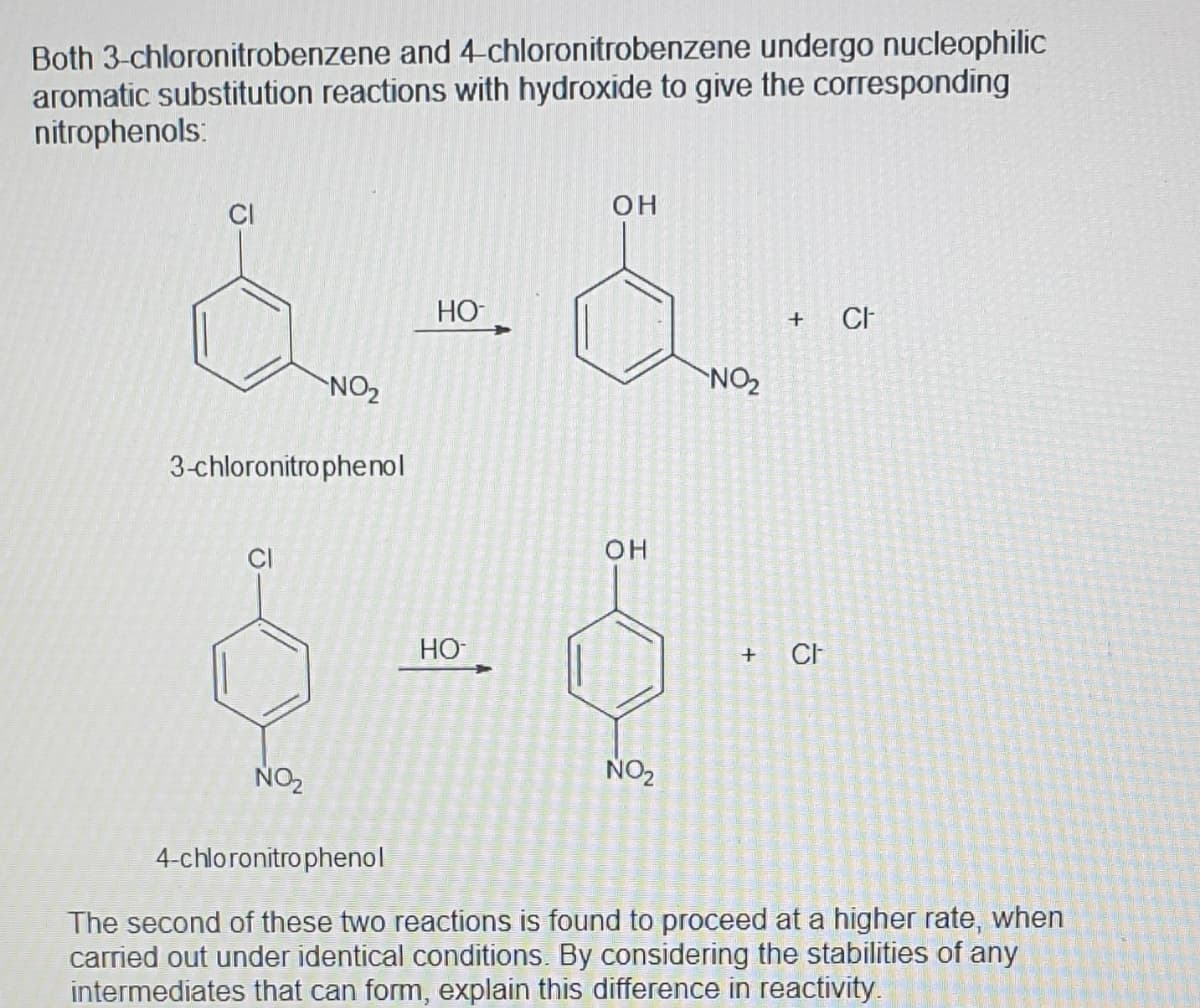Both 3-chloronitrobenzene and 4-chloronitrobenzene undergo nucleophilic aromatic substitution reactions with hydroxide to give the corresponding nitrophenols:
Both 3-chloronitrobenzene and 4-chloronitrobenzene undergo nucleophilic aromatic substitution reactions with hydroxide to give the corresponding nitrophenols:
Organic Chemistry
8th Edition
ISBN:9781305580350
Author:William H. Brown, Brent L. Iverson, Eric Anslyn, Christopher S. Foote
Publisher:William H. Brown, Brent L. Iverson, Eric Anslyn, Christopher S. Foote
Chapter21: Benzene And The Concept Of Aromaticity
Section: Chapter Questions
Problem 21.46P
Related questions
Question
100%
Help please

Transcribed Image Text:Both 3-chloronitrobenzene and 4-chloronitrobenzene undergo nucleophilic
aromatic substitution reactions with hydroxide to give the corresponding
nitrophenols:
ČI
он
HO
CH
+
NO2
NO2
3-chloronitro phenol
он
HO
NO2
NO2
4-chloronitro phenol
The second of these two reactions is found to proceed at a higher rate, when
carried out under identical conditions. By considering the stabilities of any
intermediates that can form, explain this difference in reactivity
Expert Solution
This question has been solved!
Explore an expertly crafted, step-by-step solution for a thorough understanding of key concepts.
Step by step
Solved in 2 steps with 1 images

Knowledge Booster
Learn more about
Need a deep-dive on the concept behind this application? Look no further. Learn more about this topic, chemistry and related others by exploring similar questions and additional content below.Recommended textbooks for you

Organic Chemistry
Chemistry
ISBN:
9781305580350
Author:
William H. Brown, Brent L. Iverson, Eric Anslyn, Christopher S. Foote
Publisher:
Cengage Learning

Organic Chemistry
Chemistry
ISBN:
9781305580350
Author:
William H. Brown, Brent L. Iverson, Eric Anslyn, Christopher S. Foote
Publisher:
Cengage Learning